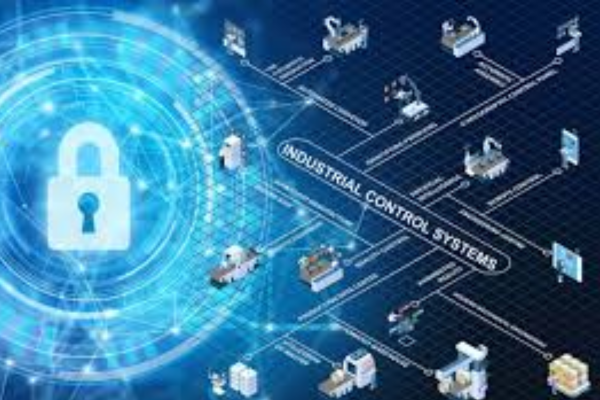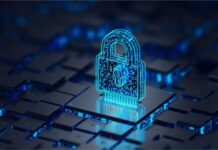As the combination of industrial automation and control systems with become more and more connected and integrated, they become much more vulnerable to cyber threats. The merger of operational technology and information technology has led to many advantages, like increasing the efficiency of working and making data-driven decisions, but it has also threatened the industry with new cybersecurity hazards. According to the Consegic Business Intelligence, the Industrial Automation and Control Systems Market size is estimated to reach over USD 864.94 Billion by 2031 from a value of USD 379.47 Billion in 2023 and is projected to grow by USD 413.87 Billion in 2024, growing at a CAGR of 10.8% from 2024 to 2031.
Unique Challenges in Securing IACS
Industrial Automation and Control Systems differ in their basic principles from classical IT systems, hence the latter may lead to security threats that are not typical for the domains of cybersecurity. The initial problem lies in the non-current nature of most of the IACS pieces. The fact that the industrial systems mostly have long life periods, sometimes as long as several decades, and the majority of them were not made with cybersecurity, is in mind. This usually leads to the fact that they are at very high risk of modern cyber threats. Updating or patching these obsolete systems is a problem that may occur, which will be difficult, expensive, and can be a reason for disruption of operations.
Another problem is the real-time operational requirements that IACs have. In industrial settings, automation processes usually happen in a deterministic way with very small time delays so traditional IT security solutions like deep packet inspection and continuous patching may not work as always. Security measures have to be designed in such a way that they do not inhibit the main operations of the system. Additionally, the heterogeneity of IACS components is a major problem for cybersecurity which makes activities in this field more difficult to manage. Manufacturing facilities are a complex set of equipment such as PLCs (Programmable Logic Controllers), SCADA (Supervisory Control and Data Acquisition) systems, sensors, actuators, etc. each one of which has different capabilities and security requirements involved. This divorced configuration is the prime reason it is hard to work with one common security strategy for the whole system.
Advanced Threat Detection Techniques
Advanced Threat Detection Techniques Because of the abovementioned difficulties, advanced threat detection methods gain practical significance in protecting IACS from cyber-attacks. The use of machine learning and artificial intelligence to find anomalies is one of the approaches that comply in this case. These are mechanisms where by observing normal course industrial processes and through their continuous examination.
for anomalies they get the capacity to reveal security incidents that may arise without being discovered by the conventional signature-based methods. For instance, ML algorithms can be used to look through the network traffic patterns, command sequences, and sensor data to find tracks that are hidden from the human eye and are the signs of a cyberattack. These devices can teach themselves using old data, thus, they can adapt to the new surroundings and hence their accuracy is further improved with fewer false positive alerts. Anomalydetection can be enforced in several locations throughout the IACS architecture including the devices, the network, and the system.
Another advanced feature is the use of digital twins in cybersecurity. The digital twin is a duplicate of a physical system that will work in a virtual way to simulate and analyze the system. If an organization develops digital copies of the essential IACS pieces, it can emulate various intruder scenarios and assess how the system will be affected. As a result, the companies can easily recognize the threats, and they can test the security system under a controlled environment without the risk of failure.
Mitigation Strategies and Best Practices
Furthermore, the attainment of the cybersecurity of IACS will require a multi-layered approach that encompasses a set of mitigation strategies and best practices. One significant approach is network segmentation, where a system seldom stands as a whole but is fragmented into smaller, isolated subsections so as not to propagate potential threats. The organization, through the placement of strong access controls and firewalls between the segments, can stop and defend against security incidents.
The other major strategy is the secure authentication and access control systems. For example, it ensures that the threats are mitigated through the use of MFA by employing user passwords, smartcards, and time-based tokens. On-premises applications of access-controlled (RBAC) can even further narrow down the members who can perform actions that in the end will accumulate the least possible number of vulnerabilities and breaches.
Regular vulnerability management and security evaluations are also a crucial part of this. Thus, activities such as regular security check-ups, penetration tests, and software bug evaluation are among the steps that examine the security quality often and repair any discovered shortcomings of the system. The company’s patch management planning should be designed so that the procedure for removing security gaps by making sure the latest security updates are applied to all systems not leading to prolonged inactivity and operational problems.
In addition, secure communication protocols should be adopted to guarantee data integrity and privacy. The organizations should use the prescribed technology like TLS (Transport Layer Security) and IPsec (Internet Protocol Security) to encrypt the communications between IACS components thus making it difficult for the cybercriminal to break the secure connections in simple eavesdropping or tampering. Software secure coding practices should be diligently pursued in the industrial software development cycle to keep off several common software vulnerabilities such as buffer overflows and injection attacks.
Future Directions in IACS Cybersecurity
The perspective for the security of IACS will be the continued change of AI and ML for more effective detection and response of threats. The prediction is that in the future these technologies will have become more sophisticated and will be able to provide even faster and more comprehensive solutions thereby lowering the potential of security incidents.
The future of IACS cybersecurity is blockchain technology integrated among others that are used to enhance security and transparency in industrial operations. Blockchain is employed to make the data flow of exchanges and transactions that are in a singular IACS being the truthfully incorruptible, thus, enabling a tamper-proof audit trail used for verification of the integrity of the system and the detection of any unauthorized changes. Furthermore, quantum computing is one of the important breakthroughs that would change IACS cybersecurity. Quantum computing as a technology poses a hazard through the weakness it introduces in classical cryptosystems, albeit it also offers advantages to the creation of quantum-resistant cryptographic solutions. Partners will need to know ahead of the game and be ready for the new securities as they come.
Conclusion
Security of industrial automation and control systems through cybersecurity is a dynamic and varied domain that is expressive to specific knowledge and sophisticated techniques. These systems, as well as being old, hold one-off needs of such devices as real-time usage and have multiple components that necessitate a kind of stable and full-scale security. By using modern techniques like advanced threat detection, implementing multi-tiered security solutions, and continuous research and development, industries can beef up the security of their IACSs and prevent critical production plant operations from cyber threats. In the industrial field, more research and creativity will be inevitable in the face of new problems concerning the safety of cyber systems in an environment where threats are becoming more and more sophisticated.

















